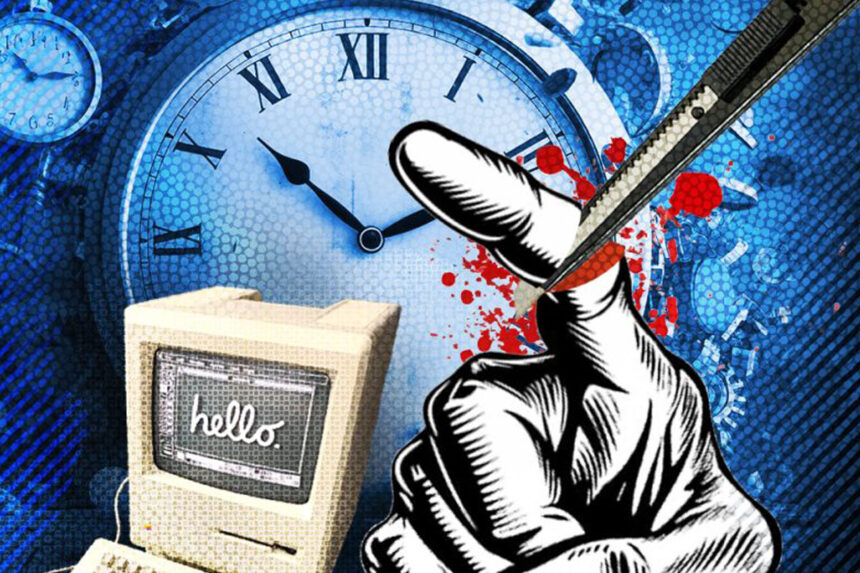written by
DOUGLAS OKASAKI
I am back!
It’s been a while, and if you’re reading this column, you probably still work in publishing.
Congratulations! The ups and downs of our industry require a resilient state of mind.
Resilience is something we learn from life’s obstacles.
And certainly, working in the media, we face a lot.
There was a time when it was great, until it wasn’t.
The question is… What did you do when everything was great?
If you are a normal human being, enjoy! Right?
Don’t feel guilty if you say yes.
But that’s when bad things happen. Things that force us to leave our comfort zone to survive. It becomes complicated.
And guess what? Stepping out of our comfort zone is an incredible experience.
It was a painful, stressful, and moving experience, that taught us a lot.

Have you had this experience in the past few years?
I had and took it as a lesson.
A lesson to rethink and redirect our lives.
But I can’t imagine my life without other directions from the publishing sector.
My first contact with newspapers was a visit to Folha de S.Paulo (the biggest newspaper in Brazil) as part of a school trip when I was a teenager.
Passing by the serious and intelligent faces of the journalists, I thought, My God! I want to work here!
A few years after finishing school, I was in the design department.
And since then, for years, I have worked in the design department.
Of course, in other publications around the world, but always in Editorial.
I belong to the era of the photomechanical* process. We make the art and “paste-up” on the page for reproduction. Today, it is considered archaic and old-fashioned.
In one of those moments, I remember cutting my finger with a cutter and taking a Letratone tablet. There was blood everywhere, right on the newspaper’s first deadline.
These are exciting times. And who doesn’t remember their first Mackintosh computer in the design department?
The entire team had one computer.
Nostalgia aside.
If you could go back in time, what would you like to do?
Or, what advice from the past can you give to the new generation?
1) Save money
The probability of you not dying young is high. Think about the future while you are young and have energy.
Keep saving for your future; don’t start thinking about it when you’re older. It will be more difficult.
2) Think before you speak
When we’re young, we say whatever comes to mind. After it’s said, we reflect and realize it’s too late.
Think before you speak. If you’re unsure of what to say, say nothing.
3) Be polite, friendly, and fair
We spend more of our lives in the workplace. The Golden Rule says, “Do unto others as you would have them do unto you.” Your reputation is your best asset. Pay attention to this.
4) Watch out for freeloaders
Have you ever met that person you thought was your friend, and they asked and asked for favors?
They remember you only when they need a favor.
5) Don’t take it personally
People are complicated, and we overthink.
In conclusion, what you think may be different from what is.
Please don’t take things too seriously.
6) Do not rest on your laurels
That is the designer’s motto. Always ask yourself: Is there any way to improve my work?
If the WOW! effect is not there in your print or online project, try again. Don’t be afraid to ask for help or a second opinion. Be open to all possibilities.
7) Don’t give an F*
All my life, I was worried about what people would think, and guess what?
Usually, people don’t care as much as you think. They are focusing on their problems.
Again, take it easy, don’t think too much about others, and don’t spend your precious time on what people will think.
I could keep writing , but this is already too long.
Finally
Last but not least, I would like to pay my respects and say a big “thank you” to TK Sajeev for his tireless work in newspaper design. For a long time, he has shared interviews, tips, and high-quality information to help our design community grow and be well-informed.
His work is priceless and deserves a big thank you!!!
___________
*Photomechanical process: The coated plate is exposed to light that has first passed through a transparent image carrier, such as a film positive or negative. The exposed plate is then processed to produce a plate with a defined printing process and non-printing areas.
*Letratone, or screentone, is a technique for applying textures and shades to drawings, used as an alternative to hatching. Patterns are transferred to paper from preprinted sheets. The sheet is applied to the paper, adhesive down, and rubbed with a stylus on the backing side.
![]()




